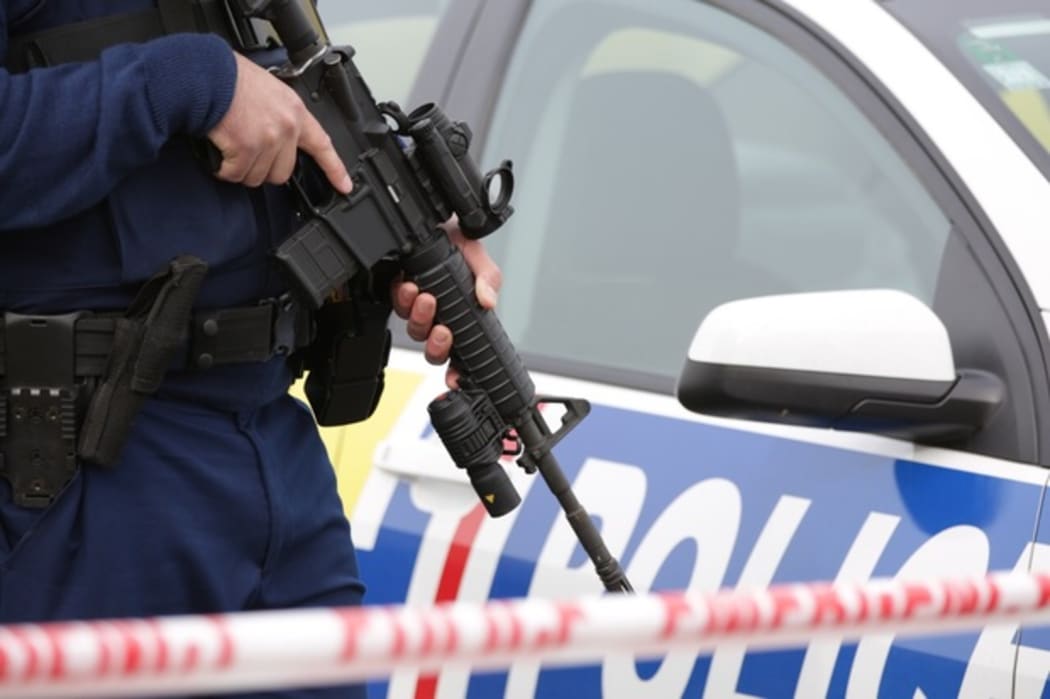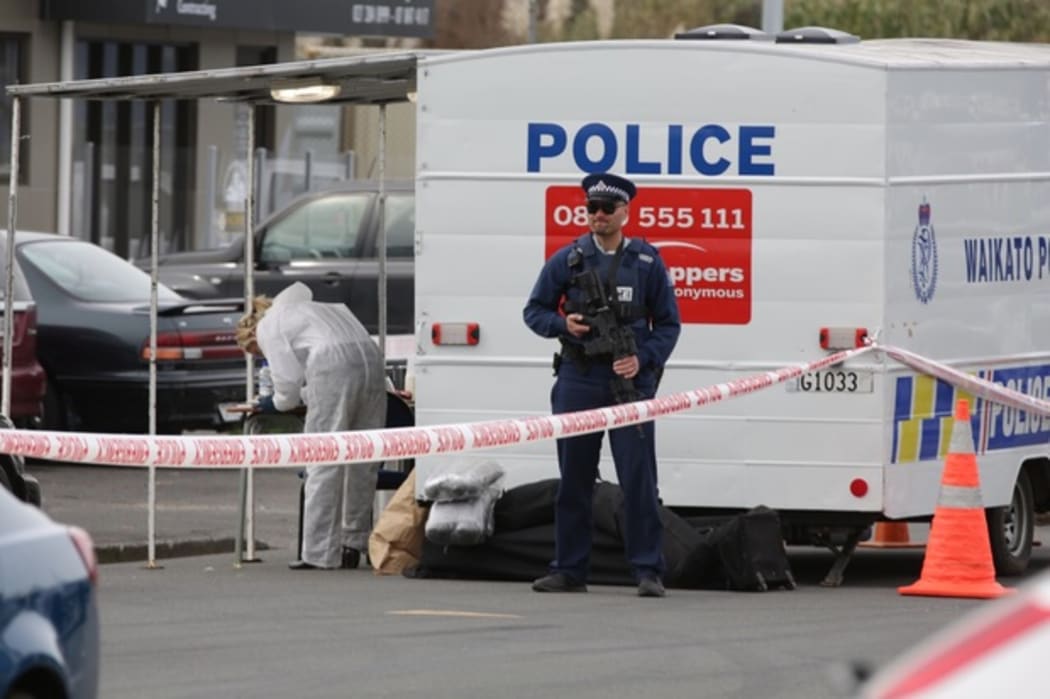In the space of 48 hours, two men were shot by NZ police officers. Here's what police say about using firearms.

A police officer holds a firearm at the scene of the Hamilton shooting. Photo: Cole Eastham-Farrelly/RNZ
A Rotorua man is in a serious condition in hospital after police shot him twice in the stomach yesterday. He was reported to have been wielding a slasher and heading towards a shopping centre.
Two days earlier, a Hamilton man was shot and killed during a drug search at a Frankton property.
Fatal police shootings in the US have made international headlines and protests have recently broken out. But figures suggest police use of lethal force is starkly different across nations.
In the last month alone, US police shot and killed ten times more people than New Zealand police did in the space of 10 years. According to The Guardian, 97 people were killed by police last month. It also revealed US police killed 1146 people in 2015 and 586 this year.
Police in NZ have shot and killed 31 people since 1941 - more than two-thirds of them since 1990. The latest figures show officers have shot 22 people in the last decade - nine of them fatally.
So when can NZ police use their guns?
According to NZ Police, officers must perceive a threat in the range of grievous bodily harm or death, either to themselves or others, to use their guns.
“Firearms have been and will always be a last resort, but when offenders carry firearms or other weapons and present a serious threat to community or staff safety, police policy allows for firearms to be used as an appropriate tactical option,” a spokesperson said.
When police open fire, the goal is to “incapacitate” the person which, according to the Merriam-Webster dictionary, means to “make someone unable to work, move, or function in the usual way.”
READ: Know your rights when dealing with the cops
Police say just wounding an armed subject doesn’t necessarily eliminate their risk to themselves or others.
“In all situations, police training is focused on resolving the situation with the least amount of force possible ... Unfortunately, in a small number of circumstances, police have no option but to resort to firearms.”
All incidents involving use of firearms by police are reviewed and investigated. This normally includes investigation by the Independent Police Conduct Authority, as well as various internal police inquiries.
In the case of the Rotorua man who was shot yesterday, police said they had no option but to shoot after attempts to pepper spray and taser the man failed. It’s believed he was the under the influence of methamphetamine, which is why tasers didn’t have any effect.
They said the 35-year-old was wielding a slasher heading towards a shopping centre and had attacked a police car and refused to drop the weapon.
WATCH: Bay of Plenty District Commander, Superintendent Andy McGregor discusses the circumstances around police shooting a Rotorua man.
And in Hamilton two days earlier, Nick Marshall, 36, was fatally shot during a drug search. Marshall pointed a long-barrelled gun at officers and did not put it down despite being told to several times.
Police said the operation was well-planned and thought through and related to an ongoing investigation into drugs and firearm dealings and the shooting of Marshall was unavoidable.
But Marshall's family and partner disagreed. After the shooting, Marshall's partner Kendyl Eadie posted on her Facebook page that he was not armed or threatening. She said police needed to be held to account.
In the US, tensions between the public and police have boiled over into protests after the killings of Alton Sterling and Philando Castile in Minnesota and Louisiana last week.
Following the shootings, a man who said he was angry about incidents, killed five Dallas police officers at a protest over excessive police force against black Americans.
But a professor of sociology at Canterbury University, Greg Newbold, said there were significant differences between how police in the US and New Zealand operated.

Police guard the site of the fatal shooting in Hamilton earlier this week. Photo: Cole Eastham-Farrelly/RNZ
Newbold should know, he’s been out in the field with both of them.
“In the US you’ve got routinely armed police who are trigger happy and arrogant and they think they can get away with shooting civilians and they do get away with shooting civilians.
“In New Zealand where a killing is concerned there’s an Independent Police Conduct Authority investigation, every single killing gets fully investigated in New Zealand. In the United States a lot of police killings don’t even get reported.“
Newbold said in recent times offenders in NZ were presenting a serious threat to police more often than they had done in the past and were suffering the consequences of that.
“It’s got nothing to do with the police being more trigger happy it has to do with people threatening the police by the look of it and getting shot.
“There’s a tendency [to believe] that the police are unfair, the police shouldn’t have done it, that the police jumped the gun and that they pull the trigger too soon.”

